LCD Display – Fundamentals
Contents

LCD or Liquid Crystal Display is a flat electronic display which is very commonly used in digital watches, calculators, laptops, televisions etc. It make use of light modulating properties of liquid crystal and polarization of light for its operation. Low power consumption, less thickness and less weight of LCD enables its use in battery powered and portable applications.
Prerequisites
Light is an electromagnetic radiation which stimulates sight and make things visible. It is produced by vibration of electric charges, having both electric and magnetic components perpendicular to each other. It is a transverse wave as the vibrations are perpendicular to the direction of propagation. The nature of light or electromagnetic wave is beyond the scope of this article.
Both electric and magnetic fields are vibrating perpendicular to the direction of propagation of light. But usually we consider the direction of electric field only. Most of the light sources are unpolarized, which means that electric field is vibrating in many directions randomly. It can be up, down, left, right etc., all are perpendicular to the direction of propagation.

Polarization of Light
The process of converting unpolarized light to polarized light is known as Polarization. Electric fields in polarized lights will vibrate only in a specific pattern (not randomly in all directions) or in one plane as given in the following diagram. Polarization can be done in different methods but LCDs use Vertical and Horizontal Polaroid filters.

A vertical polarizer will pass only vertical components of the lights and horizontal components will be absorbed by it. Similarly a horizontal polarizer will pass only horizontal components and vertical components are absorbed.

So as shown in the above image we can block or pass light by changing the polarization.
Segments or Pixels

Segments or Pixels are the smallest building blocks of a display. Pixel is an abbreviation of Picture Element, which is a term commonly used in digital imaging, in which each image is constructed by a set of pixels. While segments are the smallest building block of customized displays like seven segment display which can display only numbers.
Liquid Crystal
As the name indicates Liquid Crystals exists in a state between crystalline (solid) and isotropic (liquid) state. Among many phases, Nematic is a simplest form of liquid crystal phase which is employed in LCD technology.

Molecules of liquid crystal are long and cylindrical in shape. Each molecules in a plane are arranged in such a way that the major axis of each molecules are parallel to each other. Orientation of molecules in each plane will be slightly different from the molecular orientation of adjacent planes as shown in the below diagram. This difference in molecular orientation in different planes will cause twisting the polarization of lights when it passes through it.

Liquid crystals are affected by electric field, when we apply a voltage it will react and change its arrangement. This unique behaviour of liquid crystals made the key to LCDs.
ON Pixel or Segment

In the above image we can see that molecules in each plane have different orientation without electric fields. So the polarisation of light changes when it passes through liquid crystal without electric field.
OFF Pixel or Segment

When an electric field is applied, we can see that all the molecules are arranged parallel to the same axis. So there will not be any change in the polarization of light when it passes through liquid crystal in an electric field.
Basic Components of LCD Panel
LCD panel looks like a piece of glass and it is commonly called as LCD Glass (displays used in calculators). It is constructed of different layers as shown in the following diagram.

As explained above, the twist in light polarization created by the liquid crystal is the basis of LCD operation. Now let’s see the detailed working. There are basically two types of LCD displays, Transmissive and Reflective.
Transmissive Displays

You can easily understand the working of transmissive LCD display from the above illustration of a segment. At the left side we can see a light source which is emitting unpolarized light. When it passes through the rear polarizer (say vertical polarizer), the light will become vertically polarized. Then this light enters to the liquid crystal. As we seen before, liquid crystal will twist the polarization if it is ON. So when the vertically polarized light passes through ON liquid crystal segment, it becomes horizontally polarized. Next is front polarizer (say vertical polarizer), which will block horizontally polarized light. So that segment will appear as dark for the observer. If the liquid crystal segment is OFF, it will not change the polarization of light, so it will remain vertically polarized. So the front polarizer will pass that light. So it will appear as bright (not dark) for the observer.
This displays allows the use of back lights, commonly known as Backlit LCDs. We can also use ambient light as the source as used in the device shown below.

Reflective Displays

Usually calculators uses this type of display. The working is similar to the transmissive displays except that the light source and the observer are in the same side. There is a reflector on the other side which will reflect back the light from the front side. You can easily understand the working if you understand the working for the transmissive type.
Transflective Displays
As the name indicates it is a combination of Transmissive and Reflective displays. It reflects some light back to the observer to make the display visible during good ambient light conditions. And this display allows us to use back light which can be used during bad ambient light conditions.
Positive and Negative LCDs
These LCD displays are capable of creating both positive and negative images as shown in the below image.

A positive image is created by dark pixels or segments on white background. In this kind of displays front and rear polarizers are perpendicular to each other. That means if the front polarizer is vertical then the rear one will be horizontal polarizer. Thus OFF segments and background will pass light and ON segments will block light creating dark on the light background. These displays are commonly used in applications which have the presence of ambient light is high. It is also capable of creating displays with different background colors.
A negative image is created by light pixels or segments on dark background. In this kind of displays both front and rear polarizers are aligned to each other. That means if the front polarizer is vertical, the rear one will also be vertical and vice versa. Thus OFF segments and background will block light from passing through the display and ON segments will pass light creating light display on dark background. Backlit LCDs commonly use this kind of display which is used where the ambient light is low. This display is also capable of creating different background colors.
Color LCD
Now you can easily imagine, how a color liquid crystal display is made.

Each pixel of a color LCD will have 3 sub pixels producing Red, Green and Blue colors. By varying the combination of RGB we can produce any color.
Note : This article covers only the basics of LCD working. LCD Technologies are beyond the scope of this article, I will cover those in respective articles.
References
- Microchip Application Notes – Image Source
- Olympusmicro – Image Source



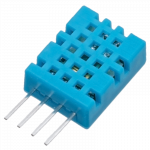
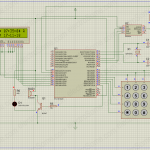





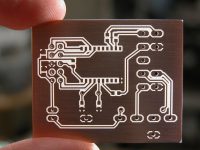



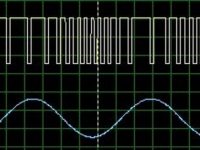


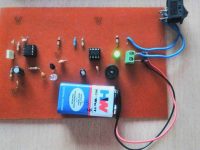
Sir can i have your email Id..
I’m doing a mini project and It would be grateful to have your help.
Thanks.